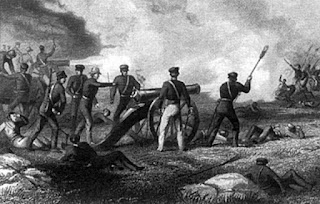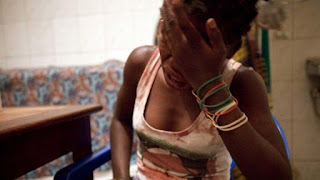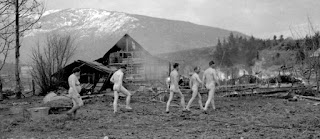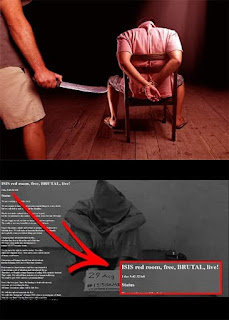The Goliad massacre was an event of the Texas Revolution that occurred on March 27, 1836
The Goliad massacre was an event of the Texas Revolution that occurred on March 27, 1836
The Goliad massacre was an event of the Texas Revolution that occurred on March 27, 1836, following the Battle of Refugio and the Battle of Coleto; 425–445 prisoners of war from the Texian Army of the Republic of Texas were executed by the Mexican Army in the town of Goliad, Texas.
The men surrendered under the belief they would be set free within a few weeks, however this was not to be. Despite appeals for clemency by General José de Urrea, the massacre was carried out by Lt. Colonel José Nicolás de la Portilla, under orders from General and President of Mexico, Antonio Lopez de Santa Anna.
The entire Texian force was killed, except for 28 men who feigned death and escaped. Among these was Herman Ehrenberg, who later wrote an account of the massacre; William Lockhart Hunter survived despite being bayoneted and clubbed with a musket.
Because of the intervention of Francita Alavez (known as the "Angel of Goliad"), 20 more men were spared to act as doctors, interpreters, or workers. Also spared were the 75 soldiers of the Miller and Nashville Battalion, who were given white arm bands. Among those killed were commanders Colonel James Fannin (of the Coleto battle) and Lieutenant Colonel William Ward (of the Refugio battle).
Massacre
The Mexicans took the Texians back to Goliad, where they were held as prisoners at Fort Defiance (Presidio La Bahia). The Texians thought they would likely be set free in a few weeks. Urrea departed Goliad, leaving Colonel José Nicolás de la Portilla in command. Urrea wrote to Santa Anna to ask for clemency for the Texians. Under a decree that Santa Anna had pressed and which was passed by the Mexican Congress on December 30, 1835, armed foreigners taken in combat were to be treated as pirates and executed.
Urrea wrote in his diary that he "...wished to elude these orders as far as possible without compromising my personal responsibility." Santa Anna responded to this entreaty by repeatedly ordering Urrea to comply with the law and execute the prisoners. He also had a similar order sent directly to the "Officer Commanding the Post of Goliad". This order was received by Portilla on March 26, who decided it was his duty to comply, despite receiving a countermanding order from Urrea later that same day.
The next day, Palm Sunday, March 27, 1836, Portilla had between 425 and 445 Texians marched from Fort Defiance in three columns on the Bexar Road, San Patricio Road, and the Victoria Road, between two rows of Mexican soldiers; they were shot point blank. Wounded survivors were clubbed and knifed to death.
Forty Texians were unable to walk. Thirty-nine were killed inside the fort under the direction of Captain Carolino Huerta of the Tres Villas battalion, with Colonel Garay saving one, Jack Shackelford. Fannin was the last to be executed, after seeing his men killed. He was taken by Mexican soldiers to the courtyard in front of the chapel, blindfolded, and seated in a chair. He made three requests: that his personal possessions be sent to his family, to be shot in the heart and not the face, and to be given a Christian burial.[20] The soldiers took his belongings, shot him in the face, and burned his body along with those of the other Texians killed that day.
The entire Texian force was killed, except for 28 men who feigned death and escaped. Among these was Herman Ehrenberg, who later wrote an account of the massacre; William Lockhart Hunter, also of the New Orleans Greys, who survived despite being bayoneted and clubbed with a musket; and four members of Shackelford's Red Rovers: Dillard Cooper, Zachariah S. Brooks, Wilson Simpson, and Isaac D. Hamilton, who escaped after days on the run. Because of the intervention of Francita Alavez (known as the "Angel of Goliad"), 20 more men, including Shackelford, were spared to act as doctors, interpreters, or workers. Also spared were the 75 soldiers of Miller and the Nashville Battalion.
They were later marched to Matamoros. Spared men were given white arm bands and, while wearing them, could walk about freely. They were advised not to take off the arm band, since Mexican troops were hunting for those few who had escaped from Coleto, Victoria, and the massacre itself.












Comments
Post a Comment